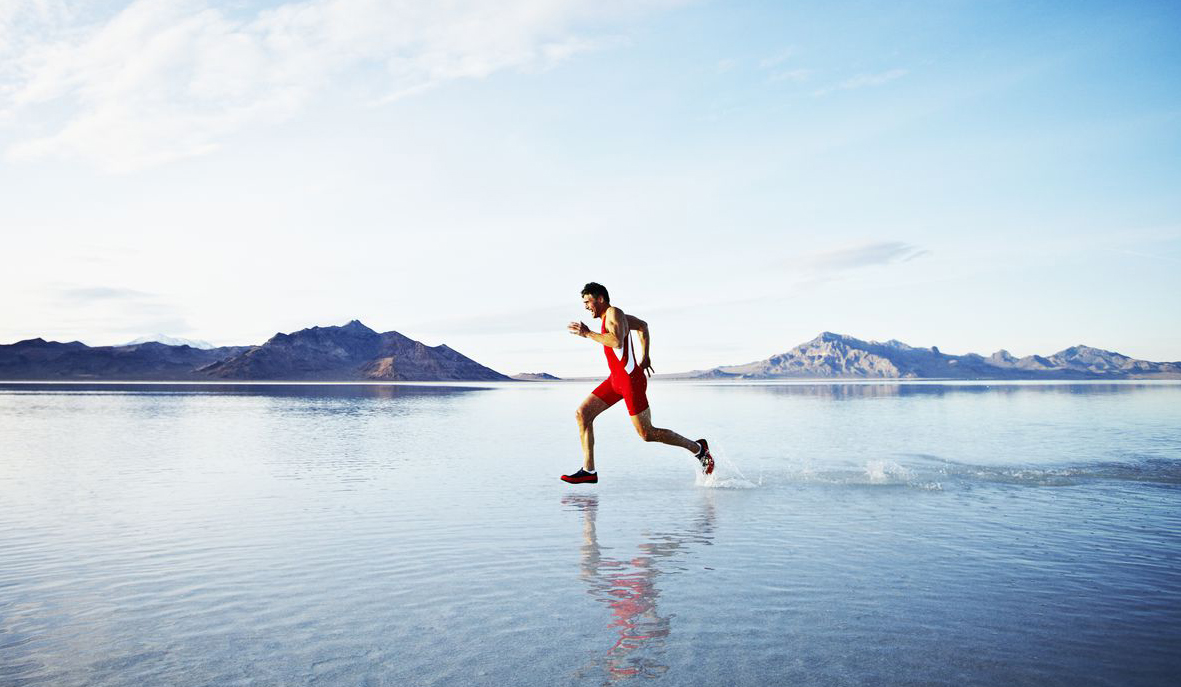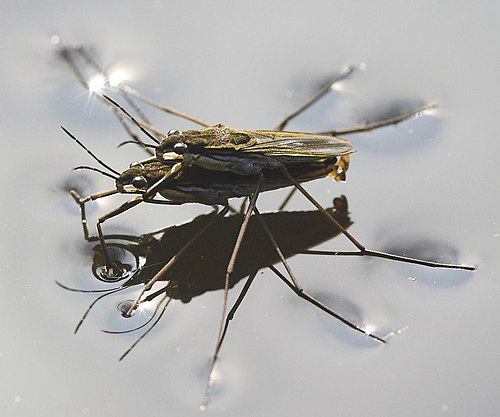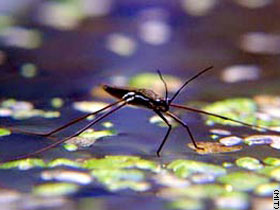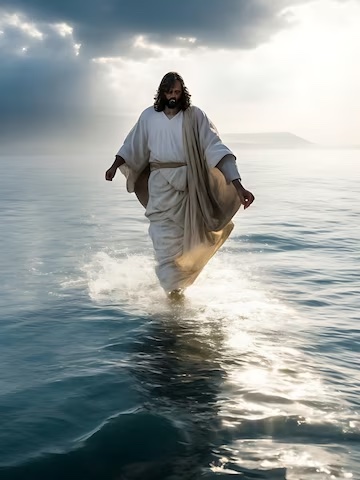

If you trudge slowly across the water, you'll sink, yet if you walk briskly or run, you stay on top of the water. If you walk across the water and stop, you'll sink. If you try to yank your foot out of the water, it will get stuck, yet if you pull it out slowly, you'll escape.

Animal locomotion on the surface layer of water is the study of animal locomotion in the case of small animals that live on the surface layer of water, relying on surface tension to stay afloat.
There are two types of animal locomotion on water, determined by the ratio of the animal's weight to the water's surface tension: those whose weight is supported by the surface tension at rest, and can therefore easily remain on the water's surface without much exertion, and those whose weight is not supported by the water's surface tension at rest, and must therefore exert additional motion in a direction parallel to the water's surface in order to remain above it.
A creature such as the basilisk lizard, often dubbed the 'Jesus lizard', has a weight which is larger than the surface tension can support, and is widely known for running across the surface of water. Another example, the western grebe, performs a mating ritual that includes running across the surface of water.
Surface living animals such as the water strider typically have hydrophobic feet covered in small hairs that prevent the feet from breaking the surface and becoming wet. Another insect known to walk on the water surface is the ant species Polyrhachis sokolova. The pygmy gecko (Coleodactylus amazonicus), due to its small size and hydrophobic skin, is also able to walk on the water surface.
According to biophysicist David L. Hu, there are at least 342 species of water striders. As striders increase in size, their legs become proportionately longer, with Gigantometra gigas having a length of over 20 cm requiring a surface tension force of about 40 millinewtons.
Water striders generate thrust by shedding vortices in the water: a series of U-shaped vortex filaments is created during the power stroke. The two free ends of the "U" are attached to the water surface. These vortices transfer enough (backward) momentum to the water to propel the animal forwards (note that some momentum is transferred by capillary waves; see Denny's paradox for a more detailed discussion.). Continue reading

Robot insect walks on water BBC - August 6, 2003
Scientists have developed a robotic insect which walks on water. The team, based at the Massachusetts Institute of Technology (MIT) in the US, were testing out a theory about how one family of foraging insects performs the same trick. The robotic version of the water strider is bigger than its real-life counterpart and its motion less graceful, but it does seem to show that an MIT team has managed to capture the essence of a natural phenomenon.

Jesus walking on the water, or on the sea, is recorded as one of the miracles of Jesus recounted in the New Testament. There are accounts of this event in three Gospels - Matthew, Mark, and John - but it is not included in the Gospel of Luke. This story, following the miracle of the feeding of the five thousand, tells how Jesus sent the disciples by ship back to the "other side" of the Sea of Galilee (the western side) while he remained behind, alone, to pray. Night fell and the sea arose as the ship became caught in a wind storm. After rowing against the wind for most of the night, the disciples saw Jesus walking on the water. They were frightened, thinking that they were seeing a spirit, but when Jesus told them not to be afraid, they were reassured. After Jesus entered the ship, the wind ceased, and they arrived at land. Continue reading